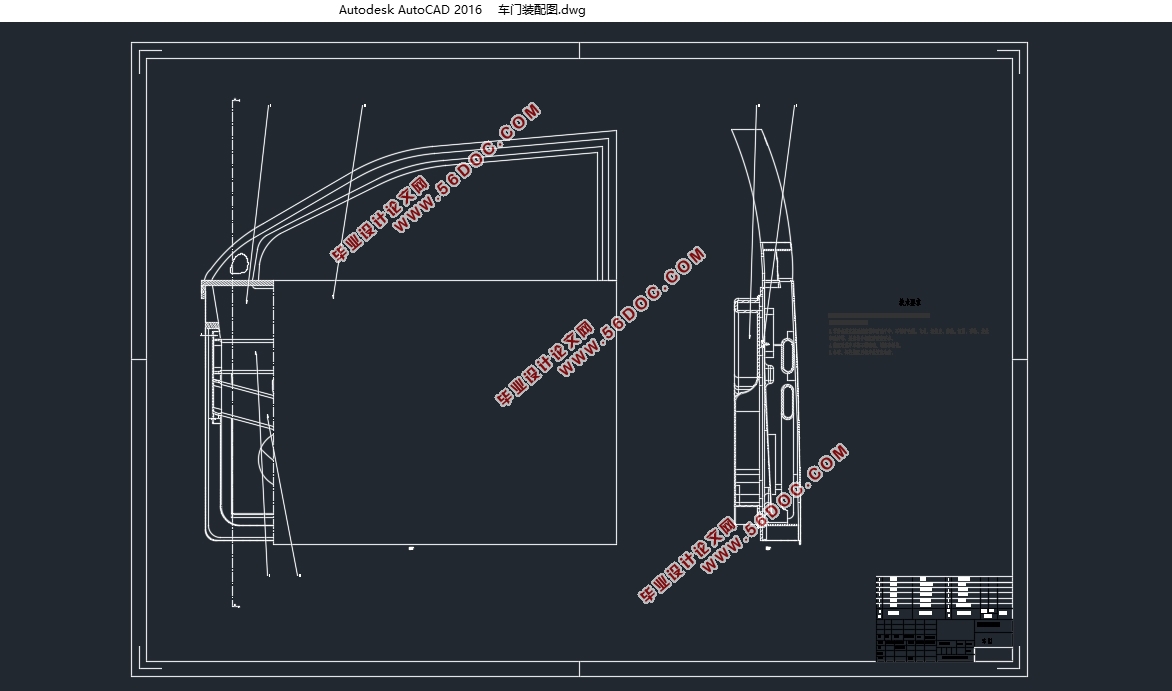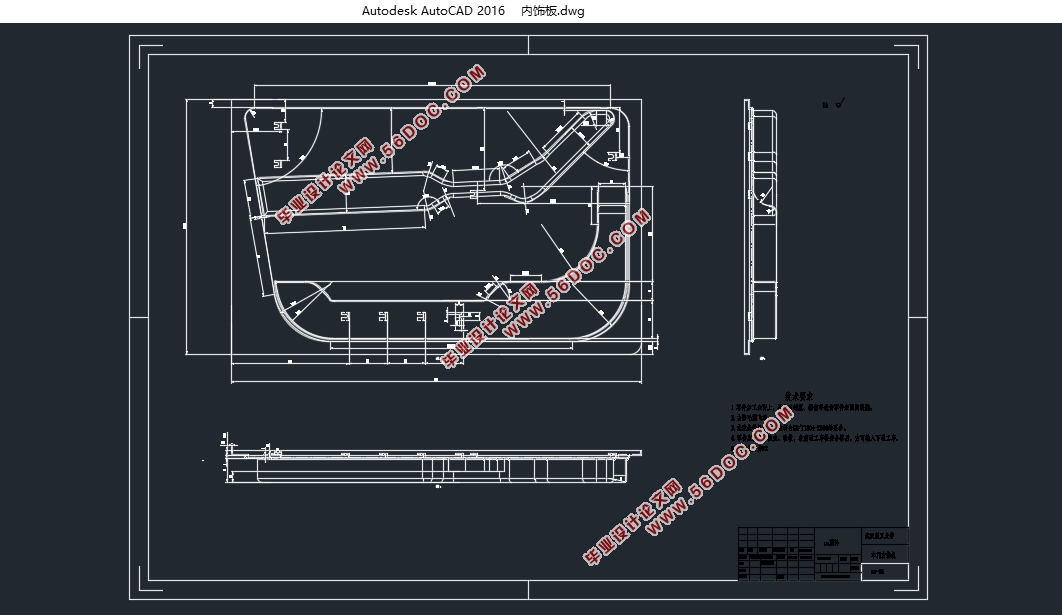中级轿车轻量化过程中的车门设计(含CAD零件图装配图)(任务书,开题报告,外文翻译,论文说明书14400字,CAD图5张)
摘 要
随着人们对环境和能源问题的日益看重,提高燃油经济性成为汽车的一个发展趋势,而在同等技术条件下,汽车的油耗和车重有着明显的线性关系,汽车油耗随着车重的增加而增加,因此,对汽车采取轻量化设计毫无疑问是提高燃油经济性的一个发展方向,而车身作为汽车中的重要部件,其轻量化设计在汽车总重减少中具有重要意义。
本文主要针对近年来日益引起重视的轻量化问题,对车门进行轻量化优化,从而减少车门重量,进一步降低汽车总重,从而提高燃油经济性。本文优化的主要内容如下:
(1)通过对现有中级汽车的研究分析,了解其尺寸参数及性能参数,确定研究基准,为之后的建立车门模型和有限元分析优化做准备。
(2)进行中级汽车车门的设计,根据确立的研究基准确定车门尺寸及材料,进而绘制三维模型,在建立三维模型的过程中要考虑到安全性、舒适性等指标。
(3)对建模完成的车门进行抗撞性、轻量化的优化,通过有限元分析对车门进一步改进,从而减轻重量,提高性能。
关键词:轻量化;车门设计;有限元分析
Abstract
As environment and energy problemsarebecoming more and more important, improvingfuel economy of cars becomes a developmenttrend.Under the same technical condition, there is an obvious linear relationship between the car's fuel consumption and vehicle weight.The automobile fuel consumption increaseswith the increase of vehicle weight.Therefore, lightweight design for cars no doubt improves the fuel economy, and the door as an important part in the car body, its lightweight design is of great significance to reduce thecar’s total mass.
This paper focuses on lightweight optimization of the door so as to reduce the total weight of the vehicle andimprove fuel economy. The main contents of this optimization are as follows:
(1) Understand the size parameters and performance parameters of the existing intermediate automobile through the analysis, and determine the research benchmark, so as to prepare for the establishment of the door model and the finite element analysis and optimization.
(2) Design intermediate car doors, determine the door size and materials according to the established research benchmark, and then draw a 3d model. In the process of building a 3d model, safety, comfort and other indicators should be considered.
(3) Optimize the crashworthiness and lightweight of the modeled door, and further improve the door design through finite element analysis, so as to reduce its weight and improve performance.
Keywords:Lightweight; Door design; Finite element analysis



目录
目录 1
第 1 章 绪论 1
1.1 研究背景及意义 1
1.2 国内外发展现状 1
第 2 章 车门设计 3
2.1 车门设计要求 3
2.2 车门类型选择 3
第 3 章 三维模型的建立 4
3.1 CATIA软件介绍 4
3.2 门体的确定 4
3.3 车门外板的确定 4
3.4 车门内板的确定 5
3.5 车门抗侧撞梁的确定 5
3.6 车门内饰板的确定 6
3.7 各部位连接方式的确定 6
3.8 三维模型的建立 7
3.9 本章小结 9
第 4 章 有限元基本原理及分析过程 10
4.1 有限元分析基本原理 10
4.2 有限元分析的基本过程 10
4.3 本章小结 11
第 5 章 内饰板的轻量化 12
5.1 引言 12
5.2 几何模型简化 12
5.3 网格划分 12
5.4 静压测试 13
5.5 结果分析 16
5.6 本章小结 16
第 6 章 内外板的轻量化 17
6.1 引言 17
6.2 网格划分 17
6.3 窗框刚度分析 18
6.4 车门内外带线刚度分析 18
6.5 抗凹性能分析 19
6.6 轻量化分析 20
6.7 本章小结 21
第 7 章 抗侧撞梁的轻量化 22
7.1 引言 22
7.2 网格划分 22
7.3 动力学分析 23
7.4 结果分析 23
7.5 本章小结 24
第 8 章 总结及展望 25
8.1 总结 25
8.2 展望 25
参考文献 27
附录 28
致谢 29
|







